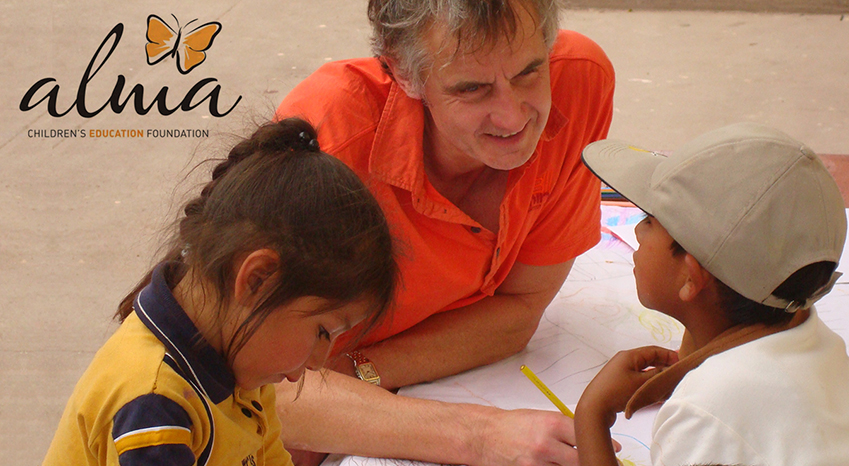A COVID-19 driven revolution in education?
Source: Alma Children’s Education Foundation
In recent decades, thought leaders in education around the world have suggested the need to tilt education towards critical and creative thinking. Meanwhile, digitization and automation in the workplace have led us to a less labour-intensive economy which in turn questioned the validity of public education systems geared towards creating skilled workers and professionals. So innovative educational concepts, such as the teaching of creative thinking nurtured by a kindergarten environment, advocated by Mitchel Resnick at M.I.T., or the value of spiritual and intuitive knowledge, advocated by some indigenous education experts, began to resonate in traditional education circles. Now that COVID-19 has shut down schools everywhere and forced educators to create new curriculum and delivery methodologies, we have been given the opportunity to re-invent education models.
Eight years ago, in Peru and Bolivia, the Alma Children’s Education Foundation, a Canadian registered charity, created a play-based, project-based curriculum focused on critical and creative thinking, and intuitive and spiritual knowledge utilizing outside of the classroom learning. We found that students enjoyed learning this way because it was fun and because the contextual aspect made it more relevant and consistent with the informal education they had received since birth at home. Parents loved it because they were involved in curriculum creation and it championed their own, usually indigenous, culture and history. For example, a month-long project in the high Andes was based on the potato harvest which required children to interview their parents and grandparents to access their store of knowledge. We also developed home strategies to engage parents in the implementation of the curriculum. Many of the parents are illiterate so their input had never been solicited for their children’s learning. Now they were integral to the pedagogy and its implementation which made education more relevant and accrued ancillary benefits such as greater attendance of parents in meetings, more help with homework and even a lower incidence of substance and sexual abuse. Our thesis was that education could come from people and other sentient beings other than paid, professional teachers.
While the focus was on critical and creative thinking and harmonious values, we made sure that children were achieving State academic standards. We were happy with the results and sure enough, a few years ago, the Peruvian Government initiated a new national policy on education recommending outside of the classroom learning and critical thinking. This was a challenge for educators who had only ever taught the “3Rs,” and mostly by having students copy what the teacher wrote on the blackboard over and over again. At the beginning of 2020, education authorities in the districts where we work, familiar with our success, engaged us to begin training a small cohort of their teachers on our methodologies. Then COVID-19 hit and everything shut down.
The Peruvian Government’s response, like governments around the world, was to require remote education using online resources. In Peru the program was called “I learn at home.” The problem was, and still is, that teachers in Peru and Bolivia, like teachers most everywhere in the world, had no experience delivering online education. In the areas where we work, there is no connectivity, little or no hardware or software, and often no electricity. Also, in rural environments where the economy is mostly agrarian, parents have conflicting agendas. They want their children to learn but if they are at home, the parents want them to do chores as well. Our curriculum and teacher methodologies fit perfectly with the COVID-19 education reality. Our parent manuals already required parents to do some of the teaching. We were already using computers charged by solar panels and stocked with off-line resources. Finally, we were delivering training to our teachers mostly via Zoom. In order to tailor our existing methodologies to the new reality, we pivoted a little to incorporate chores into the projects while continuing to incorporate play as much as possible. The district of Quispicanchi hired us to train all 5,000 of their public school teachers and after seeing the success of our initial Zoom training sessions, the district of Beni in Bolivia engaged us to train all of their 7,000 teachers as well. In total, our unique curriculum and teaching methodologies will reach over 180,000 students by the end of 2021. Authorities in Peru and Bolivia were forced to act quickly and, to their credit, they embraced non-traditional approaches and innovative pedagogy.
COVID-19 has allowed us to question traditional systems and institutions and ways of being. In the case of education, a silent revolution was already underway in certain alternative venues but COVID-19 has given us the opportunity to completely re-define what and how we teach children within public school systems.
Alan Harman
President/Founder
Alma Children’s Education Foundation




